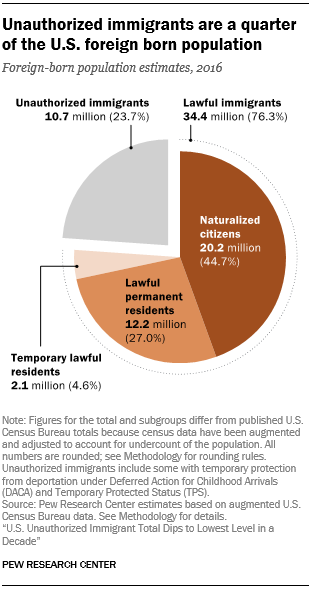Ancestry and Immigration
I have been thinking a lot this week about my ancestry and where I came from. A while back I did the Ancestry DNA test to determine where I came from. I knew from tracing the lineage that I was Irish on my father’s side, but really had no idea on my moms. I heard French and maybe Polish. As it turns out, my DNA revealed I am quite a bit Scandinavian (46%), with only 22% Irish/Scottish/Wales and 17% western European. I have not had the time to start digging into the rest of the family tree to find out where the Scandinavian comes from, but from research done by a distant relative on my mom’s side of the family we apparently have a tie to the Mayflower (albeit quite a loose tie). I found it fascinating that a relative of mine made that historical trip over here to the New World and somehow managed to survive the harsh conditions in order to produce a family lineage that led centuries later to me.
This family history, combined with recent headlines, made me think about immigration. I find it impossible to fathom that so many people want to stop immigration into the United States altogether, or severely limit who is allowed in. Do they not realize that somewhere in their family history was an immigrant that came here to start a better life? We are all immigrants. Almost none of us can claim that our families always lived here in the United States, unless you are a descendant of one of the Native American tribes that were here before the Spanish or British arrived. So then why is it so hard to accept the fact that people still want to come here to the United States and start a new life?
As a researcher, I turned to a reputable research organizations to get a better understanding on the issue. According to the Pew Research Center, we have the most immigrants of any county, with over 40 million foreign born people living in the U.S. today. The share of immigrants in today’s population (13.5%) does not even reach the peak, which occurred back in 1890 when 14.8% of the population was immigrants (9.2 million people). A time when many of our families probably made their way here.
“Immigrants today account for 13.5% of the U.S. population, nearly triple the share (4.7%) in 1970. However, today’s immigrant share remains below the record 14.8% share in 1890, when 9.2 million immigrants lived in the U.S.”
A recent study by Pew estimated that roughly 24% of immigrants in the U.S. are unauthorized, while the overwhelming majority (76%) are lawful immigrants who are either naturalized citizens or permanent residents. These estimates came from the U.S. Census which are low since many immigrants are missed in the count. Further increasing the problem would be the inclusion of a question in the 2020 Census count about immigration status. The question is being challenged in court because it has the potential to significantly reduce the rate that immigrant populations answer the participate in the census.
A look at where immigrants are coming from is interesting. If you just listened to the news headlines you would think most immigrants are coming from Mexico, but you would be wrong. Of the more than 1 million immigrants coming in each year, the top country of origin was India in 2016 (126,000 people) followed in second place by Mexico (124,000), then China (121,000) and Cuba (41,000).
According to Pew “New immigrant arrivals have fallen, mainly due to a decrease in the number of unauthorized immigrants coming to the U.S. The fall in the growth of the unauthorized immigrant population can partly be attributed to more Mexican immigrants leaving the U.S. than coming in.” Despite less immigrant arrivals, the share of immigrants in the U.S. is projected to grow to 88% by 2065. This is due in part to the fact that immigrant populations have higher birth rates than American born families.
This statistic brings me back to the beginning. If our ancestors all came from other countries in order to settle in the New World, the number is really closer to 100% with just a readjustment of the ethnic breakdown of our population. Regardless of the way you read the situation, immigration is a huge part of our society and will continue to be. Trying to stop a centuries long trend of immigration is unnecessary and counter productive. We need immigrants to come here otherwise our population would start to decline at a rapid rate. Most can agree growth is better than decline and to grow we will need immigrants to help us.







